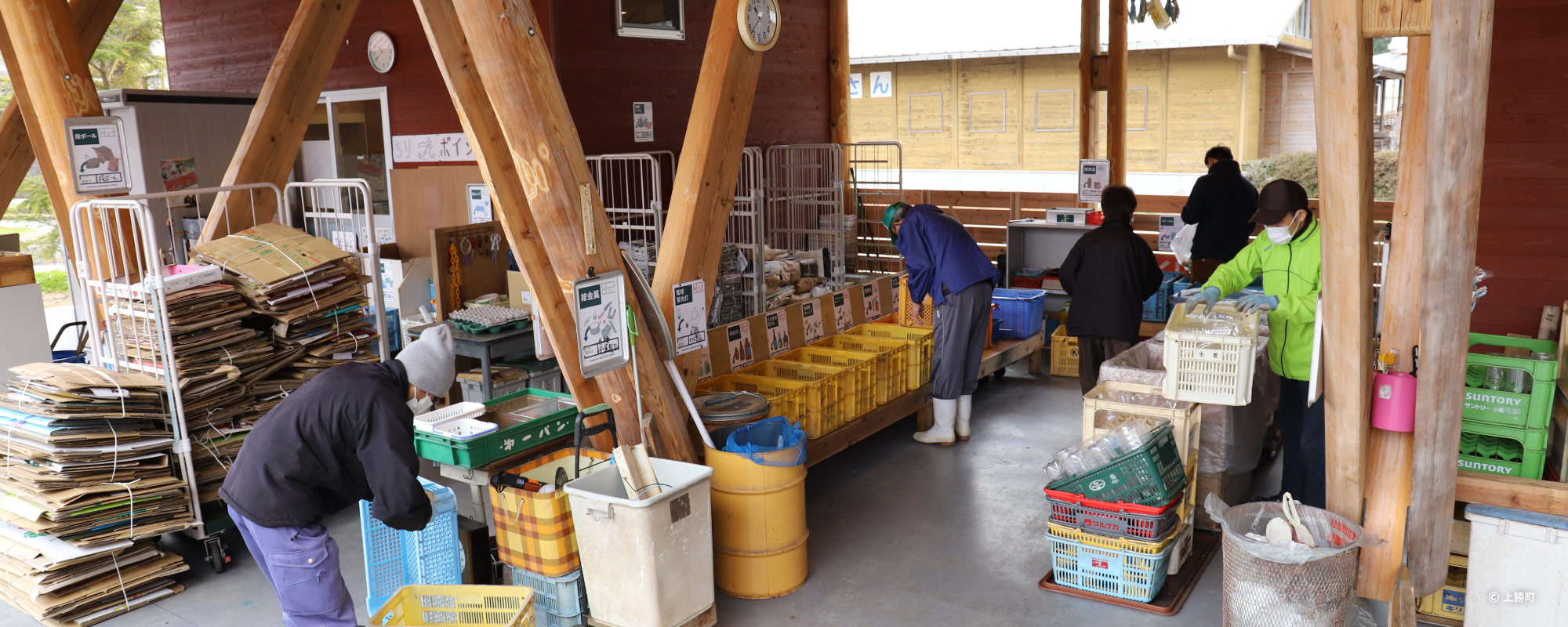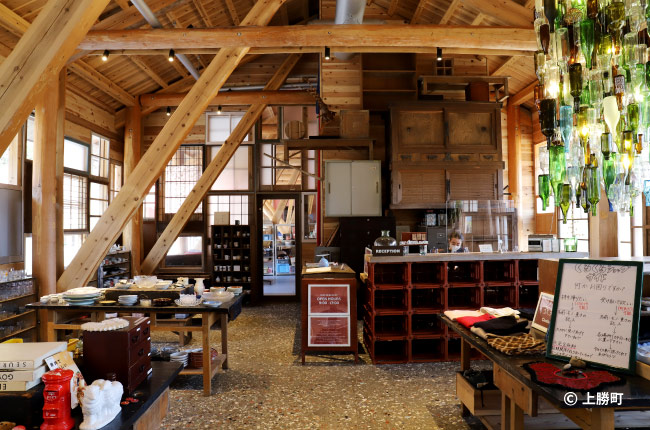
13 types and 43 categories (Since 2024)
We sort out this volume of garbage in Kamikatsu-cho.
Furthermore, our approach stems from thinking about how to make processing low-cost.
However, it is not that we wish to boast about the extent of sorting we do.
An ideal society is one where resources can be effectively
reused without having to do such troublesome things.
The local residents themselves take initiative in what we are able to do now.
That is the pride of Kamikatsu-cho.

While this is a bother, the Gomi Station is not closed apart from during the New Year period. It also
has the merit of disposing off any type of garbage at any time of your convenience.

All garbage within the town is brought here.
We will introduce the 13 types and 43 categories of
waste segregation used by Kamikatsu-cho.
The numbers from
1 to 13 are the large types of categories
Listed below are 43 categories of items to be sorted out.
Things that can be still used
Things that are no longer be used, but can be still used, things that would be “such a waste to throw out”
may be brought in to the Kurukuru Shop in the Zero Waste Center (local residents only).
Items on display in the shop may be taken home free of charge by anyone.
It’s such fun to drop by to see what treasures might be found while you’re disposing of garbage.
Kurukuru Shop

bringing garbage in
Food, heavily soiled items and
specific home appliances such as
refrigerators are not accepted.
bookkeeping
taking items home
bookkeeping
Kitchen waste
Kitchen waste is not accepted at the Gomi Station.
Kitchen waste is to be composted. This is the only resource that you can recycle yourself.
with assistance available for
purchasing
waste processor
Bring containers that contained food after washing and drying them.
◯ Steel cans
◯ Spray cans
◯ Miscellaneous metals
◯ Cardboard
◯ Magazines and
miscellaneous paper
◯ Paper packs (white)
◯ Paper cups
◯ Paper packs (silver)
◯ Hard paper cores
◯ Shredder waste
× Other paper
× Other cloth
wooden and bamboo products
◯ Waste cooking oil
the processing costs are borne by business operators
× Other plastics
△ PET bottles
△ Plastic caps
△ Brown bottles
△ Other colored bottles
◯ 1800cc bottles, beer bottles
This system is run by local governments to collect garbage and companies ought to recycle them.
× Mirrors and Mercury thermometers
× Light bulbs and fluorescent lights
× Dry cell batteries
◯ Waste batteries
◯ Lighters
× Wooden articles
× Bedding, rugs, carpet and tatami mats
× PVC products and rubber products, etc.
(Non-recyclable)
but to be burned
× Paper diapers, sanitary products,
Pet sheets, animal litter
but to be put into landfill
× Waste fire extinguishers
× Specific home appliances
Recovery programs voluntarily implemented by companies, etc.
Participation by local residents who endorse the goals.
×
Bellmark Movement
Nisseysangyo Co., Ltd.
Stickers for shipping
×
Terra Cycle
×
Terra Cycle
shampoo and detergent

There is no need to prepare 43 trash cans in the house.
Frequent items to be disposed differ from household to household, therefore,
sorting varies by household.
(white & silver)
What you want to sort out and how you call them are up to you.
Please put together items that you do not see very often or items that you are not sure about how to sort,
and please ask the Gomi Station staff.
That is why there is no need to remember the 43 categories perfectly.